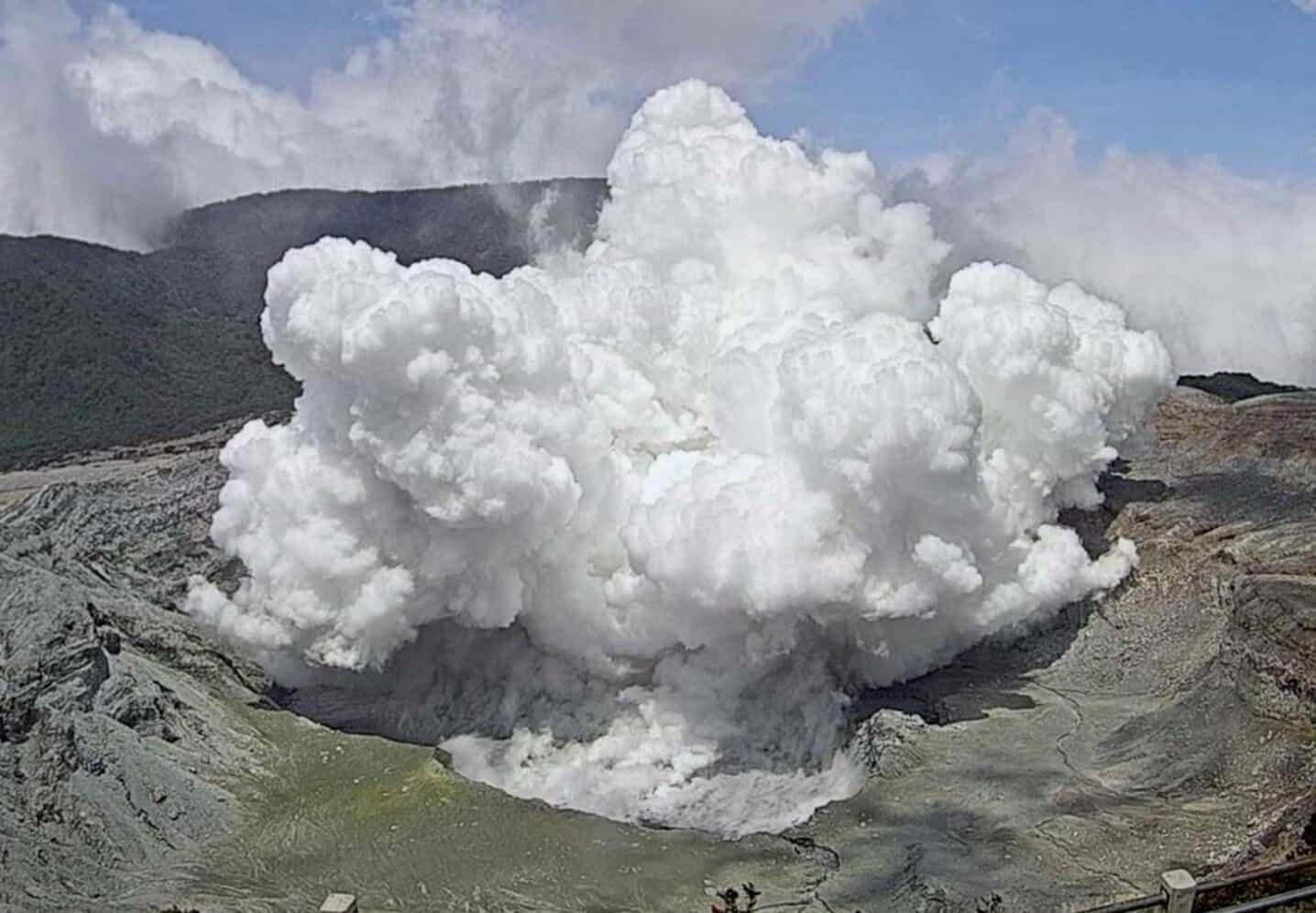Costa Rica Park officials are hearing reports of companies using social media to offer illegal tours to Poás Volcano through unauthorized routes, despite the national park’s closure due to ongoing volcanic activity. The Volcanological and Seismological Observatory of Costa Rica (OVSICORI) recorded an eruption early Thursday, adding to concerns about safety in restricted areas near the volcano.
Scientists from OVSICORI and the Ministry of Environment and Energy (MINAE) have identified certain zones around Poás Volcano as high-risk due to persistent volcanic activity. The Quemaderos sector and areas near the crater are noted for toxic gas emissions, unstable terrain, and occasional rock expulsions. Thursday’s eruption, detected at 2:14 a.m., produced an ash plume reaching 600 meters above the crater, with sulfur dioxide emissions measured at over 600 tons per day, according to OVSICORI volcanologist Geoffroy Avard.
Poás Volcano National Park has been closed to the public since March 26, a decision made by MINAE and the National System of Conservation Areas (SINAC) following increased seismic activity and ash emissions. “The park remains closed to protect visitors and staff while conditions are assessed,” a MINAE spokesperson said. The closure will continue until volcanic activity subsides to safe levels.
Despite the restrictions, some companies are advertising tours that access closed areas of the park, charging fees for entry via unofficial paths. MINAE has reiterated that entering protected areas without authorization violates Article 58 of Forestry Law 7575, which carries penalties of three months to three years in prison. Individuals or businesses found organizing these tours may also face fines or additional legal consequences.
Volcanic Activity Snapshot
As a reminder here is a summary of the most recent activity at Poás Volcano, based on OVSICORI data:
| Date | Event | Details |
|---|---|---|
| March 26 | Park Closure Initiated | Seismic activity, ash emissions |
| March 29 | Major Eruption | 1,000-meter ash plume |
| April 3 (2:14 a.m.) | Latest Eruption | 600-meter ash plume, intense degassing |
The restricted zones, including the crater rim and Los Quemaderos, are designated as protected due to their ecological sensitivity and geological hazards. MINAE bases these restrictions on scientific evaluations, national regulations, and international conservation agreements. “Ashfall has been reported in nearby communities like Zarcero and Grecia, and gas emissions pose a health risk,” Avard said, referencing data collected through continuous monitoring.
Officials are asking the public to report any individuals or companies promoting tours to restricted areas. “These activities not only break the law but also increase safety risks,” the MINAE spokesperson stated. The ministry noted that unauthorized entry can hinder emergency response efforts, as rescuers may need to navigate hazardous terrain to assist those in distress. Past incidents, such as the 2017 eruption that closed the park for over a year, demonstrated the challenges of managing emergencies in such conditions.
The National Emergency Commission (CNE) has placed Poás Volcano on an Orange Alert, the third of four levels, indicating a significant ongoing threat. Yellow Alerts are in effect for nearby regions, including Poás, Alajuela, and Sarchí cantons, where ashfall and sulfur odors have prompted recommendations for residents to use masks and limit outdoor exposure. “We’re seeing consistent seismic signals and gas output,” Avard explained, adding that the volcano’s behavior remains unpredictable.
The park’s closure follows a pattern of intermittent shutdowns tied to Poás’ activity. In January 2025, smaller eruptions occurred, though they were less intense than the current cycle. The 2017 phreatic eruption, which ejected ash and rocks over a kilometer high, led to a prolonged closure and stricter safety protocols. The U.S. Embassy in San José issued a travel advisory on March 28, advising American visitors to avoid the Poás area until conditions stabilize.
MINAE and OVSICORI are conducting daily assessments of seismic activity, gas levels, and ash dispersal to determine when the park might reopen. “The decision will depend on a sustained decrease in volcanic indicators,” the MINAE spokesperson said. Until then, authorities are focused on enforcing the closure and educating the public about the risks of illegal tours.
Reports of these unauthorized activities have surfaced on platforms like X, where users have noted offers for “exclusive” volcano access. The CNE and MINAE are collaborating to identify and address these operators, emphasizing that such tours undermine efforts to protect both people and the park’s ecosystem. “The restrictions are in place for a reason,” the MINAE spokesperson added, urging compliance with official guidelines.






